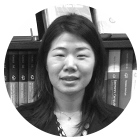Proud to Publish: Particle Physics Reference Library
In our Proud to Publish series we talk to our editors about the books they were most proud to publish, commission or work on in the past year. Read our interview below with Hisako Niko, Editor (Books), Science, in which she tells us about the book she is most proud to have published in 2020 and what makes this book stand out.
Iãm proud to have published ãã as Open Access books. I believe that I contributed to bringing a set of brilliant volumes as Open Access to the community of HEP which is my academic background. Iãm happy that many students and researchers use those books for their research.
Why is this your personal 2020 highlight?
The set of three volumes of Particle Physics Reference Library has a long story. These new versions were initially published by Christian Caron approximately a decade ago as part of the Landolt-BûÑrnstein book series and were hosted on SpringerMaterials, our materials science platform managed by Michael Klinge and his team. The volumes had more than 100 contributors and got a high reputation. For this reason we started looking into ways to make these books more widely accessible. Many contributors to these volumes originate from CERN and so we arranged a collaboration with CERN to publish the titles Open Access. At the same time, we approached the editors, Herwig Schopper, Christian W. Fabjan and Stephen Myers, to publish a new edition of the volumes which they were excited to do. It was also a good experience for me to communicate with more than 100 authors all around the world. It was literally international work.
What makes this book stand out in its field?
We have 125 contributors and 43 chapters as total from those three volumes. Those volumes have a great success so far since their publication in 2020, as you can see by the download numbers below:
- Volume 1: 39K
- Volume 2: 124K
- Volume 3: 61K
Last November (2020), we celebrated together the publication of volumes as a CERNãs event (online). There were around 70 people (contributors and readers) and we presented the story behind and the editors highlights the volumes. It was a great chance to meet contributors ã we mainly communicated by emails ã so we were finally meeting each other.
This project reminds me of a Springer textbook ãã which I extensively used during my PhD. I hope I did such a contribution to HEP community as a Springer editor.
Click here for more information about this and other titles in our Physics & Astronomy collection. To add this title to your library contact us here.
If you are interested in publishing Engineering books with us, please contact Hisako Niko.
About the editors
Schopper's years as CERN's Director-General saw the construction and installation of the Large Electron-Positron Collider (LEP) and the first tests of four detectors for the LEP experiments. Several facilities (including ISR, BEBC and EHS) had to be closed to free up resources for LEP.
He is affiliated with the Vienna University of Technology and was, most recently, leading the institute of High Energy Physics of the Austrian Academy of Sciences.
He is currently executive chair of a Geneva-based company (ADAM SA) which is developing a linear accelerator for proton therapy of cancer, and non-executive Director of the parent company Advanced Oncotherapy (AVO).







